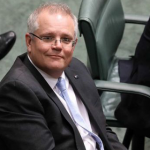Keeping Your Friends Close? Police Incursions into Social Media

The case of Sondra Prince in the United States certainly provides food for thought on the issue of police powers.
Utilising a real woman’s identification and photos (taken from her phone), the US Drug Enforcement Agency proceeded to set up a Facebook page with a view to gathering drug-related data concerning the woman and her friends.
The woman is now seeking remedy from the US Government for the extreme fear and anxiety that this hijacking of her identity has caused.
It certainly makes us ask questions like – just how far can and would Australian police go these days to get their guy?
How can we be sure if and when our social media circles have been infiltrated by law enforcement?
And is identity theft ever ok in such circumstances?
Watching over covert ops
Obviously, Australia has a different legal structure to the US, and it will be interesting to see if local police will adopt a similarly gung-ho approach to the co-option of Facebook identities – or indeed any of the multiple forums for online socialising.
As we know, each state and territory has policing and oversight powers that enable law enforcement to take on a covert or ‘sting’ like character within particular operations.
Like many things that get complicated in a federal structure, these powers can and do differ slightly across jurisdictions – but the main themes remain in each.
That is, if police obtain the correct permission for the interception of telecommunications, accessing of devices and communications, and/or controlled operations, then the stealthy police work is allowed to begin.
A little scarily, it’s also a fact that in some states permission can be obtained after the event – as long as the paperwork gets to the relevant bureaucrat in due course.
Lost in tech complexity
In terms of the oversight of such operations, there will be an Ombudsman or similar in each state and territory who conducts an audit of the agency doing such ‘stings’.
Yet it can be somewhat hard to determine exactly how much detail is actually taken into account by the law enforcement watchdog at both the permission and audit stages.
Due to the lengthy and sensitive nature of some operations, we can assume that the actual operational guts of permits will be heavily redacted or omitted during covert projects.
And the desire for law enforcement to keep details quiet – allegedly to reduce the likelihood of leakage – most likely results in oversight reports that are decidedly on the thin side.
Considering the rapid rate of growth in technology and media platforms, it must surely be close to impossible for the watchdogs of police powers to know exactly what it is that they’re permitting or overseeing?
It’s not hard to imagine that when a police request to steal a citizen’s identity, fake posts in social media and collect information by stealth comes into the Ombudsman or similar – it will be drafted with enough bamboozling tech-talk to make most bureaucrats simply frown, shrug, and then tick the box.
Frightening stuff.
Could this happen in Australia?
It’s just a matter of time before a Prince-style abuse occurs in Australia.
As history shows, law enforcement’s popularity in Australia waxes and wanes with most electoral cycles, as well as with seasonal media scaremongering.
When life is mostly calm and elections are miles away, the population prefers police to behave – the papers are more likely to spend time condemning police for assaulting a kid in Kings Cross or for hurting someone in a high-speed chase.
Law enforcement has to dot its i’s and cross its t’s in such times.
But then, when we head towards an election and that fairly meaningless phrase law and order starts to get bandied about, a matching relaxation starts to be applied to police operations.
The same is common when the Australian media picks a new scapegoat for the community to fear – whether on ethnic, religious or association grounds.
The opportunity for law enforcement to ride a wave of community fear and associated police popularity must be incredibly tempting for those developing covert operations.
In those calmer times, permissions are no doubt scrutinised slowly, with many associated questions for officers (you want to do what with this woman’s phone and Facebook account!?).
And raps over the knuckles would be sure to follow any police transgressions.
Yet when politics and media create enough sustained hysteria, the opportunities for Australian law enforcement to overstep the boundaries of civil liberties can grow at a truly alarming rate.
Surviving infiltration
After the fact of a covert social media hack and co-option, it may be possible to use administrative processes to demand answers and to scrutinise the content of any covert permissions or audits.
And if the operation has moved from a permissible ‘sting’ to outright illegality, there are laws that can be applied to maximise the chances of keeping certain damaging material out of court.
As an executive action, the possibility exists to seek remedy in this latter instance of illegality dependent upon the exact nature of the police incursion.
But really – by the time you’re mopping up the damage from law enforcement breaking into your private social media spaces, any remedies would likely be a case of too little too late.
The US case of Prince demonstrates how the everyday interactions that we have on our social media sites can become a space for ruthless identity theft and information gathering by law enforcement.
It’s certainly something that’s possible in Australia – it might just be a matter of time before that interesting ‘friend’ we’ve been chatting to on social media turns out to be not-so-trustworthy after all.






